Digital Art
Candy-Coloured Emancipation
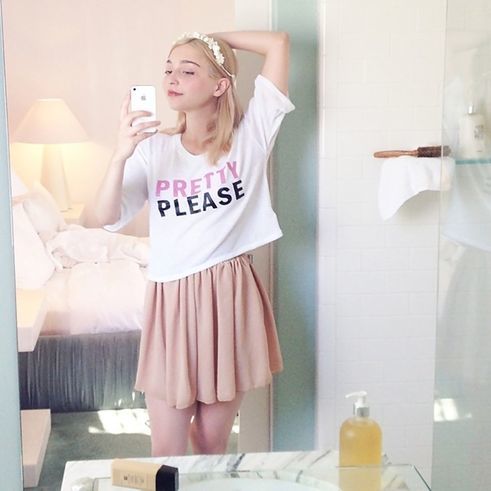
On Instagram, Tumblr, Facebook and Twitter, young female web artists fight with smartphones and hashtags for acceptance of body hair, bodily fluids, skin blemishes and blood-stained knickers.
Fourth wave feminists do not necessarily need a political mindset, like Mayan Toledano through her label Me and You, they sell statements such as “Feminist,” “Don’t touch,” “Not Your Pussy,” printed on cute granny knickers or sweatshirts. Many of them are too young to have had to reflect on job equality and fair payment. All they know is the Internet with its social media and an overabundance of pop culture. Instagram and Tumblr are the school-yards where they are not accepted because of outward appearances.
In “She’s So Untouchable” Mayan Toledano” explores longing and gender-fluidity in a video with the electro-pop trio Garden City Movement.
In 2013, Canadian artist and photographer Petra Collins, Feminism 4.0 poster girl, underwent this. At 15 she began photographing; herself, her body, everything that changes and unsettles one during puberty.
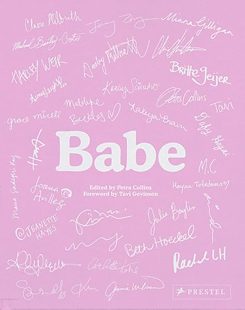 Petra Collins | „Babe” (Buch)
| Courtesy of Prestel Publishing
Petra Collins | „Babe” (Buch)
| Courtesy of Prestel Publishing
She felt pressured from all sides, photography provided stability, but she found no place for it, as she writes in the foreword to her book Babe. For this reason, she launched the online platform The Ardorous as a place to publish for young girls who cannot identify with the image of women in advertising. Body Positivity instead of Body Shaming. And of course, she knew what she was doing when she shared a photo of herself on Instagram in a green bikini bottom with her bikini zone unshaved. The picture was censored, because the curls of her pubic hair were a bit too visible. TheNet Artists collect pictures that Instagram, with its puritanical image policy, had deleted, and are publishing them in a book. The volume Pics or It Didn’t Happen. Images Banned From Instagram, edited by Arvida Byström and Molly Soda, will be published by Prestel at the end of April 2017
BREAKING TABOOS
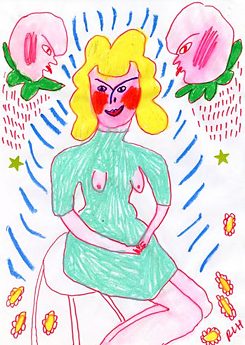 Rachel Hodgson in: Petra Collins | „Babe“ (Hg)
| © Rachel Hodgson courtesy of Prestel Publishing
Rachel Hodgson in: Petra Collins | „Babe“ (Hg)
| © Rachel Hodgson courtesy of Prestel Publishing
Censorship assures attention, and these days the side effects are more positive than negative, but the social media with which women are able to lever out power, from male-dominated institutions did not always exist. In 1974, when Judith Bernstein’s phallic drawing Horizontal was censored at the Philadelphia Civic Center, it was not exhibited in any gallery for almost 25 years. It is common knowledge that one plus-point of life as a woman artist is that one can work without the pressure of having to be successful – as stated on the Guerilla Girls’ poster of 1988 with provocative irony. Who would want to quarrel with that?
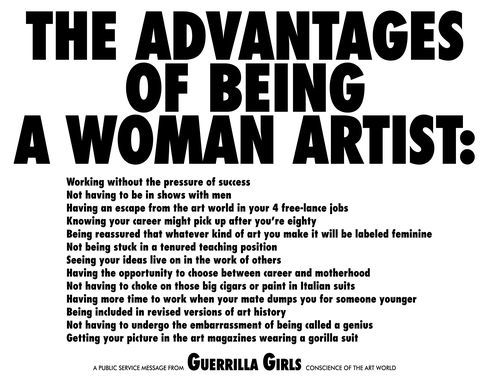 Guerrilla Girls | The Advantages of beeing a Woman Artist, 1988
| © Guerrilla Girls, courtesy guerrillagirls.com
Guerrilla Girls | The Advantages of beeing a Woman Artist, 1988
| © Guerrilla Girls, courtesy guerrillagirls.com
FICTIVE IDENTITIES
In 1997, with a hack under the title Female Extension as a response German web artist Cornelia Sollfrank raised an objection to the Hamburger Kunsthalle’s call for proposals on the topic Extension. The internet as painting and object. She was concerned that too few women would apply and therefore created 289 fictive identities complete with works by internationally established women artists. They were all admitted. And since the infiltration went undiscovered, Sollfrank had to reveal her intervention herself.
 Cornelia Sollfrank | Screenshot der Dokumentationswebsite Female Extension (1997): http://artwarez.org/femext/
| © Courtesy Cornelia Sollfrank
Cornelia Sollfrank | Screenshot der Dokumentationswebsite Female Extension (1997): http://artwarez.org/femext/
| © Courtesy Cornelia Sollfrank
FIGHTING STEREOTYPES
In the 20th century, the Suffragettes, as members of the first women’s movement were disparagingly called, fought for women’s suffrage, education and gainful employment. Since the end of the 1960’s, the second wave of feminism with the first generation of feminist artists, women in the art scene began organising themselves, starting in the United Kingdom and the USA. They fought for equality of men and women and against stereotypes and the objectification of women through the male gaze.
With each wave and each generation, priorities and media change, and with the media the possibilities. In 1974, with her 6-hour performance Rhythm 0, in which visitors took 72 objects from a table and could do with them whatever they wanted to her body, Marina Abramovic drastically highlighted female passivity. Barbara Kruger could not accept the stereotype of women as “shopping queen,” Martha Rosler countered the stereotype of women as homemaker mums and their representation in the mass media with the parody Semiotics of the Kitchen.
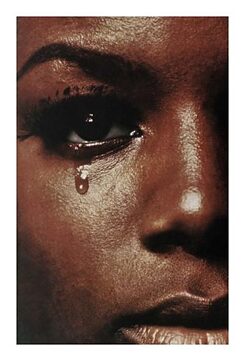 Anne Collier | Woman Crying #2
| Courtesy of the artist; Anton Kern Gallery, New York; Galerie Neu, Berlin; The Modern Institute/ Toby Webster Ltd., Glasgow; Marc Foxx Gallery, Los Angeles © Anne Collier
With her Untitled Film Stills Cindy Sherman investigated the stereotypical female roles in film, and Anne Collier photographed and enlarged currently fashionable weeping women on album covers, dissecting in this way the cliché of the weaker sex.
Anne Collier | Woman Crying #2
| Courtesy of the artist; Anton Kern Gallery, New York; Galerie Neu, Berlin; The Modern Institute/ Toby Webster Ltd., Glasgow; Marc Foxx Gallery, Los Angeles © Anne Collier
With her Untitled Film Stills Cindy Sherman investigated the stereotypical female roles in film, and Anne Collier photographed and enlarged currently fashionable weeping women on album covers, dissecting in this way the cliché of the weaker sex.
Selfie-Performance
In 2014, in her performance Excellences & Perfections – keeping her followers, who at that time numbered just under 5000, in the dark – Amalia Ulman enacted herself on Instagram as a good girl from the suburbs who turns into a “hot babe” after moving to the “big city.” Stereotypes that she spotted in social media followed one after the other: cosmetic surgery, drug abuse, crashing out, resurrection like a phoenix from the ashes after a yoga session. She posted selfies for almost six months, as is usual on Instagram, in the bathroom, in bed, working out, eating. Only after the narrative had been completed, did Ulman come clean. All just play-acting, because, as she put it, everybody is a liar online. And that is what she wanted to show with her performance.
So pretty
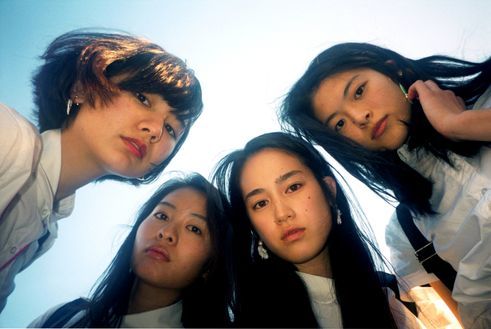 Monika Mogi in: Petra Collins | „Babe“ (Hg)
| © Monika Mogi, Courtesy of Prestel Publishing
While the british artist Tracey Emin still had to bring her bed along with everything that makes the bed hers to the exhibition space so that it could be seen, fourth-wave feminists need only their smartphones and apps to express themselves. They photograph themselves in their pink girly rooms with hairy armpits, pimply faces and bloody knickers, until these images are acknowledged with a shrug and the comment “OMG. You are so pretty.“
Monika Mogi in: Petra Collins | „Babe“ (Hg)
| © Monika Mogi, Courtesy of Prestel Publishing
While the british artist Tracey Emin still had to bring her bed along with everything that makes the bed hers to the exhibition space so that it could be seen, fourth-wave feminists need only their smartphones and apps to express themselves. They photograph themselves in their pink girly rooms with hairy armpits, pimply faces and bloody knickers, until these images are acknowledged with a shrug and the comment “OMG. You are so pretty.“